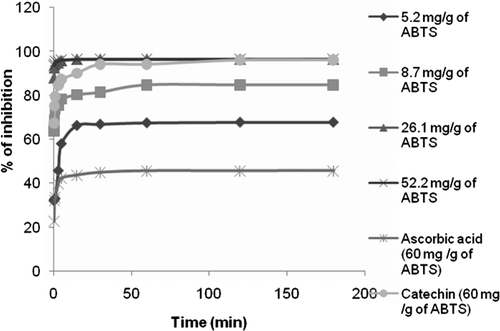Figures & data
Table 1. Phenolic content expressed as catechin equivalents and ferric reducing antioxidant power (FRAP) in three fractions of the fruit of D. glomerata.
Tabla 1. Contenido fenólico expresado como catequinas equivalentes y Poder Antioxidante Reductor de Férrico (FRAP) en tres fracciones del fruto de D. glomerata.
Figure 1. Time-related changes in percentage inhibition during incubation of ABTS•+ with different concentrations of ethanol extract. Ascorbic acid and catechin (60 mg/g of ABTS) were used as standard. The results are the mean from three replications.
Figura 1. Cambios de porcentaje de inhibición relacionados con tiempo durante la incubación de ABTS•+ con diferentes concentraciones de extracto de etanol. Ácido ascórbico y catequinas (60 mg/g de ABTS) fueron usados como estándar. Los resultados son el promedio de tres repeticiones.
